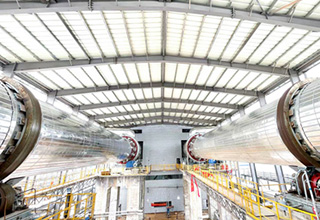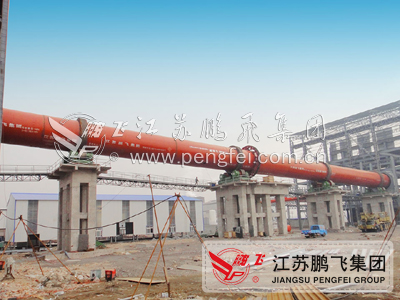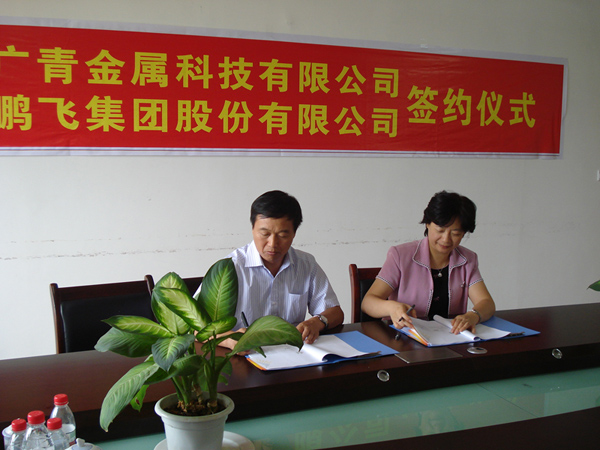Cement rotary kiln is the main equipment for dry and wet production lines of cement clinker. Rotary kilns are widely used in industries such as metallurgy, chemical engineering, building refractory materials, and environmental protection. The rotary kiln consists of a cylinder body, a support device, a supporting device with a stop wheel, a transmission device, a movable kiln head, a kiln tail sealing device, a coal injection pipe device, and other components. The kiln body of the rotary kiln is inclined to a certain degree from the horizontal, and the entire kiln body is supported by a supporting wheel device, with a stop wheel device that controls the up and down movement of the kiln body. In addition to the main transmission, the transmission system also includes an auxiliary transmission device that can still rotate the kiln body when the main power supply is cut off, preventing the kiln body from bending and deforming. The sealing devices at the kiln head and tail adopt advanced technology to ensure the reliability of the seal.
Product Overview
Cement rotary kiln is the main equipment for dry and wet production lines of cement clinker. Rotary kilns are widely used in industries such as metallurgy, chemical engineering, building refractory materials, and environmental protection. The rotary kiln consists of a cylinder body, a support device, a supporting device with a stop wheel, a transmission device, a movable kiln head, a kiln tail sealing device, a coal injection pipe device, and other components. The kiln body of the rotary kiln is inclined to a certain degree from the horizontal, and the entire kiln body is supported by a supporting wheel device, with a stop wheel device that controls the up and down movement of the kiln body. In addition to the main transmission, the transmission system also includes an auxiliary transmission device that can still rotate the kiln body when the main power supply is cut off, preventing the kiln body from bending and deforming. The sealing devices at the kiln head and tail adopt advanced technology to ensure the reliability of the seal.
Technical Description
The rotary kiln produced by our company has a sturdy structure, smooth operation, and high-quality kiln products. We can also provide users with advanced and efficient vertical tube preheaters and five stage cyclone preheaters. The equipment of the rotary kiln calcination system for production has undergone technological innovation, adopting the most advanced hydraulic stop wheel device at home and abroad, high-precision measuring plunger pump, high-precision speed regulating valve, and contact graphite block sealing device, and other advanced technologies in China. In order to improve the degree of automation, the kiln head uses industrial television to watch the fire, the process flow simulates a fluorescent screen, and the calcination belt uses an infrared scanner to directly reflect the calcination situation of the calcination belt on the computer. These new technologies have a strong intuitive feeling, easy operation, and reliable use. The thermal system has been stabilized, and the equipment operation rate has been improved. Compared with equipment of the same specifications, the operation rate has increased by 10%, the output has increased by 5% -10%, and the heat consumption has been reduced by 15%.
Product Usage
In addition to calcining cement clinker, rotary kilns are also used for calcining clay, limestone, and slag drying. In the production of refractory materials, rotary kilns are used to calcine raw materials to stabilize their size, increase their strength, and then process them into shapes. In non-ferrous and black metallurgy, metals such as iron, aluminum, copper, zinc, tin, nickel, tungsten, chromium, and files are smelted using rotary kilns to sinter and roast ores, concentrates, and intermediates. For example, in aluminum production, it is used to roast aluminum hydroxide into alumina; It is used in ironmaking to produce pellets for blast furnace ironmaking; The foreign "SL/RN method" and "Krupp method" use it for direct reduction of iron ore; The chlorination volatilization roasting method uses it to extract tin and lead, etc. During the beneficiation process, a rotary kiln is used to magnetize and roast the lean iron ore, transforming its weak magnetism into strong magnetism to facilitate magnetic separation. In the chemical industry, rotary kilns are used to produce soda, calcine phosphate fertilizers, barium sulfide, etc. It has the advantages of low energy consumption, low electricity consumption, and the ability to utilize low-grade phosphate ore, and has been vigorously promoted. In addition, in terms of environmental protection, hazardous waste and garbage can be incinerated in cement kilns to achieve harmless waste discharge, and waste can be used as fuel to save coal powder and achieve resource utilization of waste.

 Real time updates on cutting-edge information, presenting Pengfei and industry trends in a timely, comprehensive, and intuitive manner.
Real time updates on cutting-edge information, presenting Pengfei and industry trends in a timely, comprehensive, and intuitive manner.
 We firmly believe that talent is the foundation of enterprise development. We adhere to the talent concept of "people-oriented, co creation and win-win", respect the personality and creativity of each employee, and are committed to providing employees with broad development space and a fair competitive platform.
We firmly believe that talent is the foundation of enterprise development. We adhere to the talent concept of "people-oriented, co creation and win-win", respect the personality and creativity of each employee, and are committed to providing employees with broad development space and a fair competitive platform.


 中文
中文 English
English




